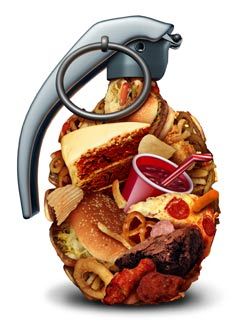High Blood Pressure Treatments NYC by Marc Bystock L.Ac.
"Acupuncture has been shown through both clinical research and observation to be able to lower high blood pressure effectively as a natural remedy and non-pharmacological therapy."
-Marc Bystock L.Ac.
Contact Marc Bystock, Leading Holistic Acupuncturist in NYC for a Free Consultation.
CONTACT MARC
VERIFY YOUR HEALTH INSURANCE
Natural Remedies for High Blood Pressure by Marc Bystock NYC Acupuncturist in Midtown Manhattan NY 10016
What is High Blood Pressure?
High blood pressure is called the silent killer for a good reason. Often there are no apparent symptoms, while damage may be taking place that could lead to cardiovascular disease, stroke, heart attack, kidney failure, or permanent vision loss.
According to the latest data put out by the Centers for Disease Control, over one-third of all adults in the United States have high blood pressure. That’s over 75 million individuals, some without proper diagnosis or treatment.
Blood pressure is simply the force of blood pushing against and moving through arteries. Like the water that rushes down a river bed, it can interfere with the surrounding tissue causing wear and tear from the constant pounding on the endothelium tissue. In the arteries, this becomes an inflammatory response along with oxidative stress and immune dysregulation. All of these factors may lead to high blood pressure.
Diagnostically, blood pressure is defined by taking a measurement when the heart muscle contracts called systolic and then again in between heartbeats when the heart is at rest called diastolic.
A measurement of 120/80 or slightly lower is normal. Whereas a reading of 140/90 or higher is considered to be too high. Finally, according to the 2017 American Heart Association guidelines, any blood pressure readings that reach or exceed 180/120 are an emergency condition, and the patient should seek immediate medical care.
The two different types of high blood pressure are primary and secondary. Primary high blood pressure is the most common type of hypertension. Approximately 95% of those with high blood pressure suffer from this type. Most people acquire primary hypertension as they age.
Secondary high blood pressure is from a specific contributing disorder such as kidney disease or a medication.
For most people having high blood pressure is a chronic disorder that may have started in their teenage years or before. It is vital to diagnose high blood pressure early and prevent it.
Common Causes of High Blood Pressure
Medically speaking, the reasons for having high blood pressure may be complicated. Usually, there is an imbalance in one or more of the following body systems:
- Sympathetic vs. parasympathetic nervous system
- The renin-angiotensin-aldosterone system (RAAS)
- Blood or plasma volume as is directed by the kidneys
- Endothelium function and nitric oxide production.
A highly stressful event can trigger the blood pressure to go up temporarily, while chronic stress can undoubtedly drive the sympathetic pathways towards maintaining a higher than normal blood pressure level.
Inflammatory foods, toxic substances, high amounts of small particle LDL, and a vast host of other substances can enter our bodies and cause inflammation in the arteries at the endothelial level. Inflammation in this location may have detrimental downstream effects leading to hypertension and cardiovascular disease.
Conventional medicine usually treats high blood pressure using a range of pharmaceutical approaches. There are diuretics, Angiotensin converting enzyme inhibitors (ACE-I), Angiotensin-Receptor Blockers (ARB’s), Calcium Channel Blockers (CCB), and Vasodilators.
Most patients who go this route must endure with a lifetime of taking medications. This not only may become very expensive, but also may lead to further negative medical implications impacting one’s state of health. The most common side effects of most anti-hypertensive class medications include:
- Dizziness
- Fatigue
- Headaches
- Joint Pain
- Insomnia
- Edema
- Depression
- Cold Extremities
How Acupuncture Treatments Can Improve High Blood Pressure
Acupuncture has been shown through both clinical research and observation to be able to lower high blood pressure effectively as a non-pharmacological therapy. Its mechanism of action is related to the Renin-angiotensin-aldosterone system, endothelium function, oxidative stress and the balancing of the autonomic nervous system.
Most often, acupuncture therapy is provided for high blood pressure in association with complementary modalities such as a patient appropriate food-based plan, botanicals, and supplements.
Blood pressure can be in a state of flux. Using a multifactorial approach is often the best method for the patient whose high blood pressure needs constant maintenance.
In one study of 34 hypertensive patients who were all being managed by anti-hypertensive medications, their blood pressure measurements all dropped after receiving a total of 15 acupuncture sessions over the course of one month. Their average systolic values dropped by 34 points, and their average diastolic values dropped by 15 points. That was an excellent response by simply adding acupuncture and not changing any other parameters.
There are many effective systems of acupuncture, each with its own merit. Whenever treating patients with high blood pressure, I often look at their metabolic biomarkers and perform a Heart Sound Recording (HSR). A Heart Sound Recording creates a unique signature graph of the four heart valves which can be analyzed for nutritional deficiencies.
Acupuncture is an excellent non-invasive, non-pharmacological therapy for reducing high blood pressure. When combining acupuncture, along with nutritional strategies outcomes are expected to be even higher.
Contact NYC Acupuncturist Marc Bystock L.Ac. to Reduce High Blood Pressure. Free Consultation!
If you or anyone you know may suffer from the devastating effects of high blood pressure that can lead to heart attack and various cardiovascular diseases, then please contact me as soon as possible!
I look forward to helping you to support your health!
Please contact me
today!
Additional Links







